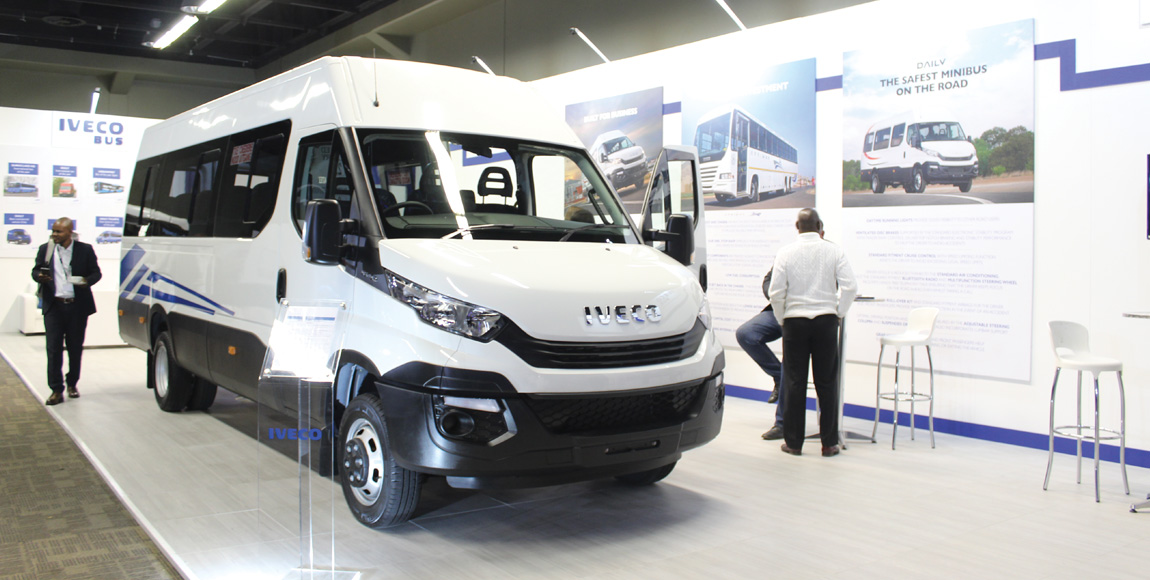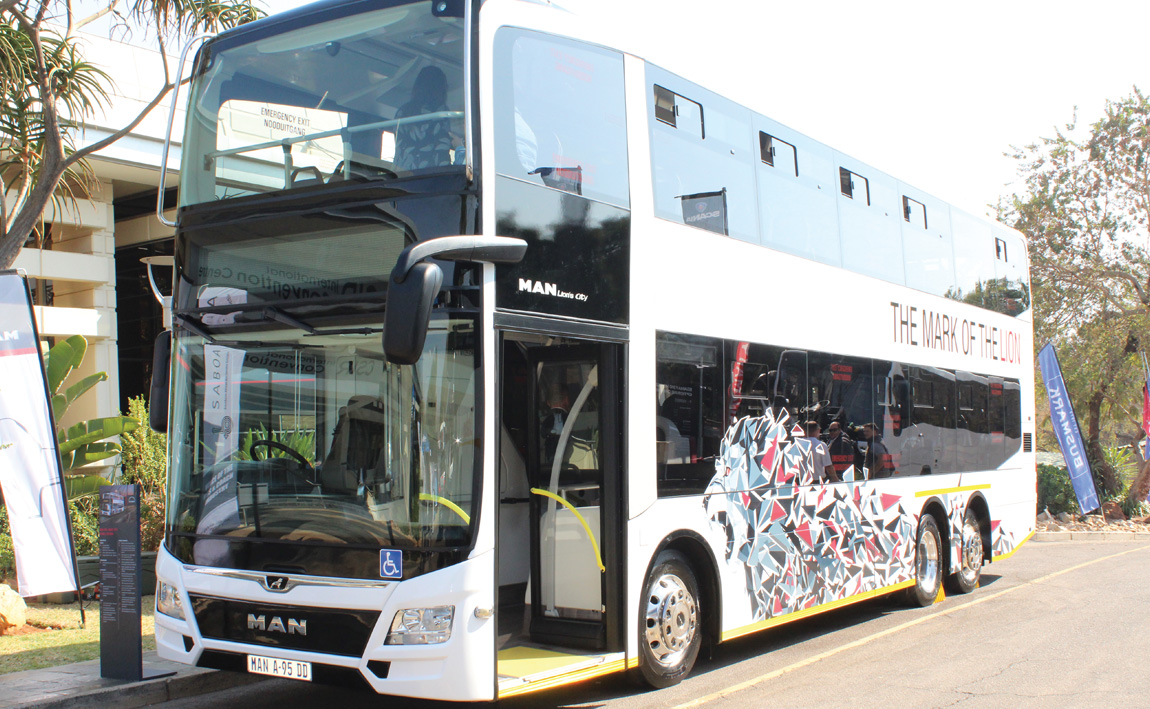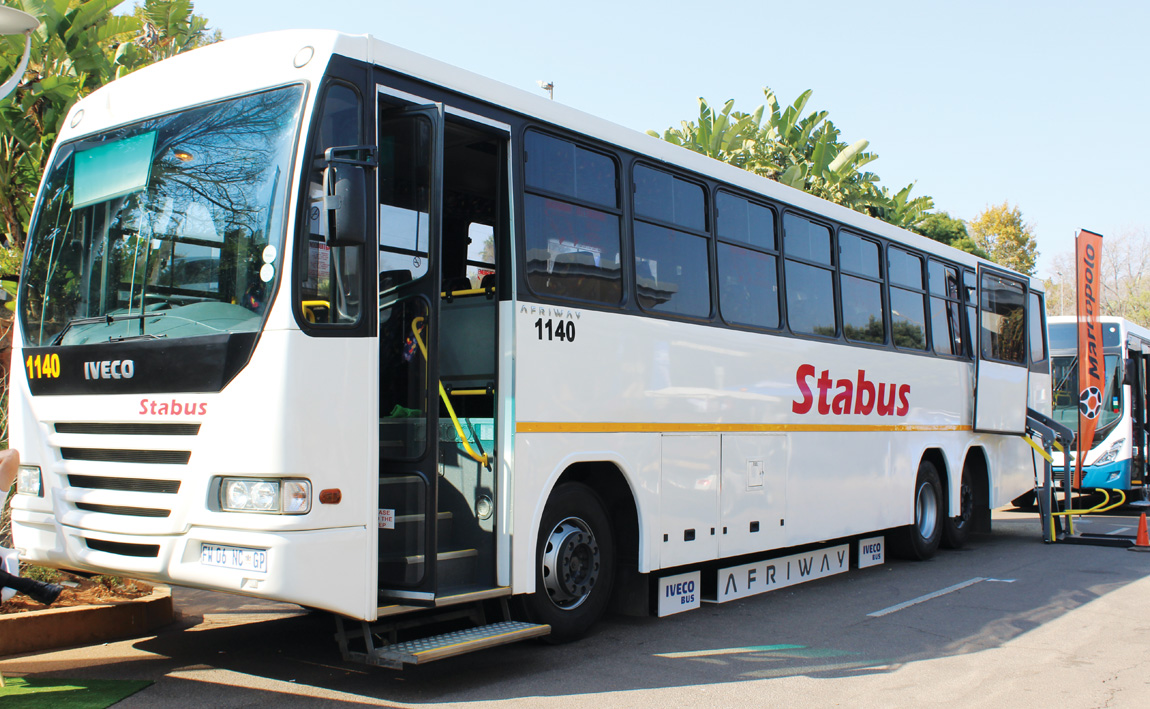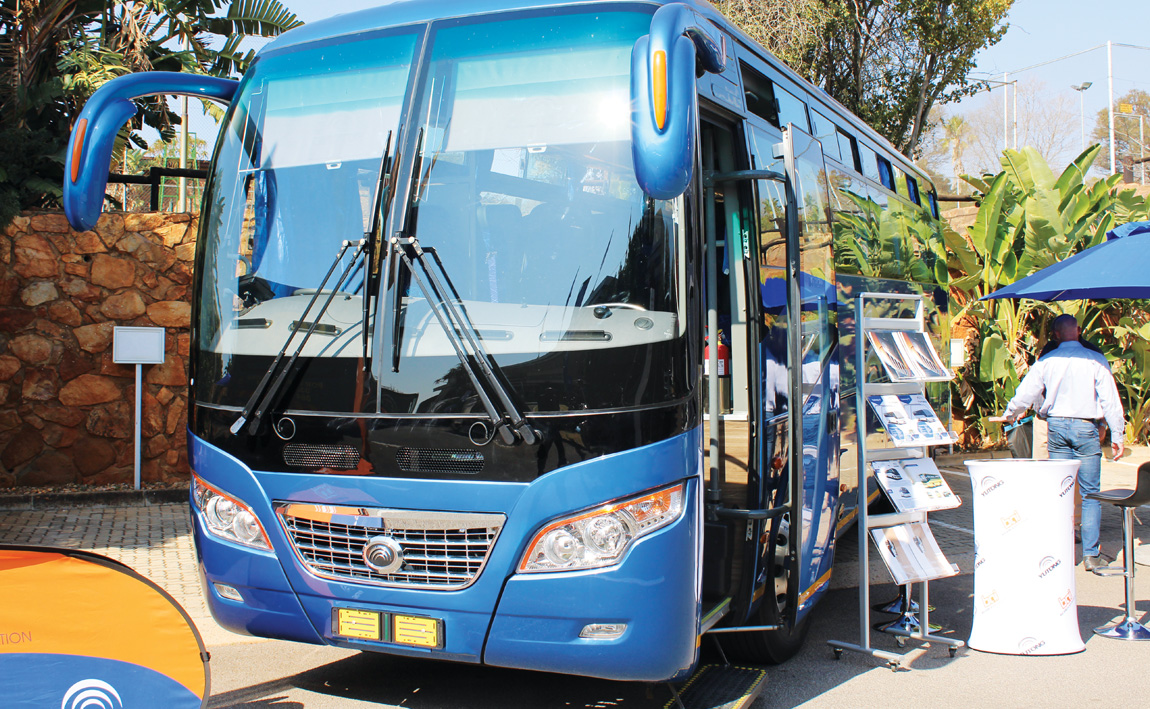All things bus and legislation

The southern African bus industry gathered for the 2019 Southern African Bus Operators Association (Saboa) Conference and Exhibition to get expert input on the challenges facing the industry. MARISKA MORRIS attended
Bus operators, government, academia, telematics companies and original equipment manufacturers (OEMs) gathered at the Centre for Scientific and Industrial Research (CSIR) Convention Centre in Pretoria on July 31 and August 1 for the annual Saboa Conference and Exhibition. Each year, the event gives the industry the opportunity to network and address some of the challenges facing bus operators.
Some of the key presentations at the 2019 conference included feedback from the Competition Commission on its market inquiry, updates to the Administrative Adjudication of Road Traffic Offences (Aarto) demerit point system and changes to the Draft White Paper on National Transport Policy.
Itumeleng Lesofe, principal analyst of market conduct at the Competition Commission of South Africa, started the first day of the conference by sharing the preliminary findings of the Public Passenger Transport Market Inquiry. At the time of the conference, the report was still incomplete.

Lesofe explained that the bus industry is a priority for the Competition Commission: “The poor spend a significant proportion of their income on public transport, which is exacerbated by apartheid spatial planning.” The inquiry looked at interprovincial bus services, bus contracting and integrated rapid public-transport network (IRPTN) or bus rapid transport (BRT) systems.
With interprovincial bus services, the Competition Commission found that Autopax had a competitive advantage. Passenger Rail Agency of South Africa (Prasa) was found to favour the bus operator by, for example, not actively pursuing Autopax for outstanding debt, providing bailouts and supplying the bus operator with a dedicated loading area.
While Lesofe didn’t share the recommendations on how to prevent this preferential treatment, he did warn that this limited other operators and it could result in an inefficient bus operator remaining in business. The inquiry also found that the interprovincial bus operators abuse the objection proceedings to delay or discourage new operators from entering the market.
It also highlighted the fact that the provincial regulatory entities had inadequate capacity and resources, which has made obtaining an operating licence a tedious and expensive exercise for new entrants and small operators in the interprovincial sector.
With the bus contracting procedures, the Competition Commission found that subsidies were disproportionally allocated between the various provinces and between urban and rural operators within the same province. When subsidies are allocated, the additional high costs incurred by bus operators in rural areas are not considered. As a result, these operators struggle, even with subsidies.
Finally, the commission found that in their current format BRT systems are inefficient and have escalating costs, low ridership and a lack of capacity. While all these issues do require serious government intervention to ensure equal opportunities and competition, Lesofe noted that change will be slow.

“Changes in the sector might require a more gradual rather than a swift response. Rapid changes could, in fact, have a negative impact such as job losses and a loss of income. Yet, we do want small and medium bus operators in the market, as this creates more competition, which results in improved efficiency,” he concluded.
Themba Tenza, chief director of research and development at the Department of Transport (DoT), shared updates to the Draft White Paper on National Transport Policy, which includes setting a standard or benchmark for public-transport infrastructure and stricter roadside testing.
Thabo Tsholetsane, Road Traffic Infringement Agency (RTIA) COO and member of the Aarto Task Team, discussed the changes to the demerit point system. Among several other amendments, RTIA introduced electronic services, which will allow it to contact individuals electronically and reduce operating costs.
There is also no distinction made for major or minor infringements. Tsholetsane explained: “Reference is now made to infringement for all types of contraventions, except for the ones that are classified as offences.” The RTIA will also introduce a traffic rehabilitation process to help infringers change their behaviour.
Aside from the technical presentations on legislation, delegates also gained some insight into what the future of public transport and the bus industry might look like. Ibou Diouf, programme manager or the Sub-Saharan Africa Transport Policy Programme (SSATP) at the World Bank, for example, discussed the role of public transport in the sustainable urban development in Africa.
The SSATP is a unique, international partnership to facilitate policy development and related capacity building in the transport sector in Africa.
Diouf introduced the topic by stating: “We remember the importance of public transport only when it fails.” Mass transport will play a critical role in an increasingly urbanised Africa, but only if governments can provide public-transport systems that are efficient and comfortable.
According to Diouf, Africa has one of the highest rates of urbanisation in the world, which is combined with poor urban design, insufficient or poor road networks and weak public-transport policies. This leads to informal public transport, such as minibus taxis, poor road conditions, road safety concerns, congestion, pollution and ill-optimised investments.

“The total cost as a result of these impacts on the economy is estimated at two to four percent of a country’s gross domestic product (GDP),” Diouf explained. There is thus an incredible need to address the mobility in African cities. The most effective way to address these challenges is by implementing effective public-transport systems.
Diouf said: “Simply building more roads will only lead to more private vehicles, which will fill up the roads again.” He explained that an integrated approach is key to addressing public transport and mobility in Africa. However, this will require adequate institutional set-up, data collection, proper skills, planning, good project management, substantial funding, private-sector development and engagement with civil society.
In addition to presentations from experts within the industry, the exhibition at the Saboa Conference included everything from tyres and vehicles to financial services and telematics. On display outside the conference centre were the MCV 600 with bull bar, the Marcopolo Torino, Iveco Stabus with wheelchair ramp and the new MAN Lion City double-deck bus.
In recent years, MAN has always presented something new at Saboa. As Phillip Kalil-Zackey, head of sales and products in the bus division at MAN South Africa, noted: “The Saboa Conference is the ideal place at which to do this.”
Alan Hugo, GM of Bus and Coach at the Scania Group, agreed with Kalil-Zackey’s sentiment, noting that the conference provides great networking opportunities.
“It really is a good forum. There are a lot of operators with whom to engage. It also allows product and servicer providers to see what the other OEMs are up to, so that they can differentiate their product offering. The bus industry is a relatively small sector, but a very tight-knit community,” Hugo said.
Published by
Mariska Morris
focusmagsa



